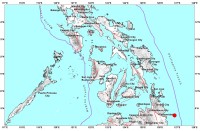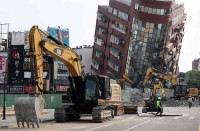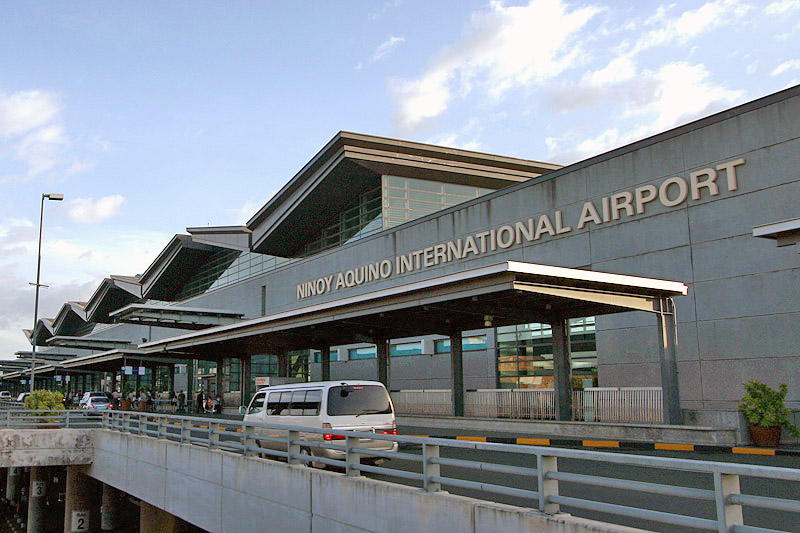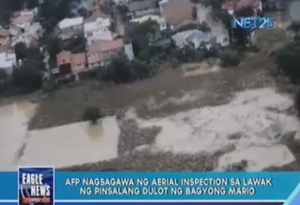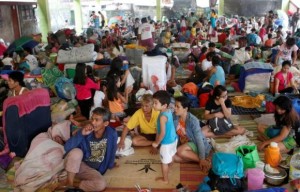
MANILA, Philippines (ENS) — More than 710,000 people were affected by tropical storm “Mario” which is expected to leave the Philippine Area of Responsibility on Sunday afternoon.
Floods have also generally subsided in Metro Manila and Luzon, and only pockets of floodwater have remained, the National Disaster Risk Reduction and Management Council (NDRRMC) said on Saturday, Sept. 20.
NDRMMC executive director Alexander Pama said that 710,120 persons or 153,976 families were affected in the Ilocos region, Central Luzon, Calabarzon area, Mimaropa, Central Visayas, Cordillera Administrative Region (CAR) and National Capital Region (NCR).
Of this number, 205,304 persons or 45,004 families are housed in 404 evacuation centers.
“Generally, the floods have subsided. But there are pockets of areas that are still flooded,” said Pama in a press conference shortly before noon.
Pama also said that there was no significant damage due to the storm, based on reports they have been receiving.
He also clarified that only five persons were reported dead, and not seven as they had earlier released to the media. The five fatalities were identified as Althea Gaviola, 2, from Barangay Bagong Silangan, Quezon City; Erlinda Centrino, 69, from Montalban Heights Rodriguez, Rizal; Jay-Ar Taganas, 34, from Bgy. Apolonio Samson, Quezon City; Glendon Sol Benedicto, 22, from Sampaloc, Manila; and another whose identity was withheld upon the request of family members.
Gaviola and Taganas drowned at the height of the storm. Centrino died because of a head injury, while Benedicto and the unidentified fatality both died due to electrocution.
Pama said seven persons were listed as injured, while one is reported missing.
Cebu, Marikina, Cainta and Ilocos Norte have declared a state of calamity.
The NDRRMC also said that electricity or power had been restored in many areas which had a power blackout yesterday.
A boat capsized in the central Philippines but all 53 crew and passengers were rescued by the navy, Pama said.
Trading on the city’s stock exchange and local currency market was suspended on Friday and will resume on Monday. At least 40 domestic flights were grounded and six international flights were diverted by civil aviation authorities.
More than 300 areas in seven regions in the country were flooded.
Storm “Mario” or Fung-Wong churned towards Taiwan on Saturday after killing at least five people in the Philippines, and forcing some 200,000 people into temporary shelter, including in the capital Manila, to escape massive flooding.
Most schools on the main island of Luzon remained closed for a second day as a huge mopping-up operation began. Some public offices have reopened.
“Some of our things are buried in mud, it will take awhile to clean up,” a resident in Marikina City told Reuters while clearing up layers of mud and debris inside their residence.
Fung-Wong, with winds of 95 kph (59 mph) and gusts of 120 kph, slammed in the northern tip of the Philippines on Friday, cutting power in many areas and soaking rice and corn farms and bringing the capital to a near standstill.
The storm, travelling north at 15 kph, is expected to hit the Taiwan on Monday, according to the state weather bureau.
Tropical storms regularly hit the Philippines, with Fung-Wong the second to hit in two weeks.
Last year, typhoon Haiyan struck in the central Philippines, killing more 6,300 people. An average of 20 typhoons hit the country every year.
(Eagle News Service with a report from Reuters)

